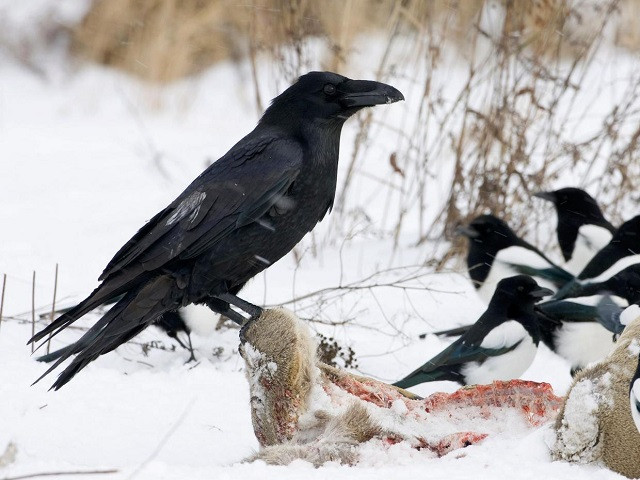Ravens can be better at planning ahead than four-year-old children, study finds
Ravens were able to pick out tools for later use and could also barter with humans

A raven sits on the carcass of a roe deer PHOTO: REUTERS
Ravens, a member of the crow family, are known to store and hide their food for consumption later on. However, an earlier theory suggested that this wasn't a sign of intelligence but rather a learned behaviour. Further on it was said that only humans and the great apes had been capable of planning ahead, The Independent reported.
However, a paper published in a leading journal called Science described how these birds were easily able to pick out tools which would assist them later on for use and could also barter with humans, exchanging a current token for a future reward.
The ravens also exercised self-control by avoiding lesser rewards in order to receive better future rewards.
'Toy' bomb kills six children in South Waziristan
Researchers from the Lund University in Sweden wrote, “This study suggests that ravens make decisions for futures outside their current sensory contexts.”
As a result of the study it was deemed that ravens have the ability to plan ahead in life but not just when it comes to hiding and storing their food.
During their study the ravens were presented with a task for the very first time, which is evaluated as a test of intelligence rather than habit, and performed better in comparison to the performance of a four-year-old.
In the research it was also concluded that “Ravens are avian dinosaurs that shared an ancestor with mammals around 320 million years ago.”
“The conspicuous similarities in performance to great apes in tasks such as these opens up avenues for investigation into the evolutionary principles of cognition and shows what the brains of some birds are capable of.”
Children’s hospital gets 600 more beds
The Study
Overall the study involved five birds, three females, called Juno, None and Embla, and two males, Rickard and Siden.
In one of the tests the ravens were taught how to open a box with a tool, after which they were presented a box without the tool which was eventually taken away. The ravens were then showed various tools and other 'distractors.' As a result, almost all of the ravens picked out the correct tool and then successfully used the tool to open the box in 86 per cent of the tests.
One of the female ravens even appeared to have outsmarted the scientists. In the ninth trial "one female invented a way to open the apparatus without the tool (and was therefore excluded from subsequent tool conditions in the rest of the study)," the paper recorded.
Meanwhile, in the bartering test, the ravens picked out a token which could be used later on to exchange for a reward with a success rate of 78 per cent.
This article originally appeared on The Independent.



















COMMENTS
Comments are moderated and generally will be posted if they are on-topic and not abusive.
For more information, please see our Comments FAQ